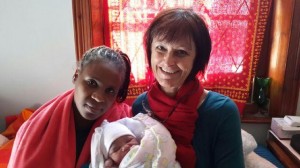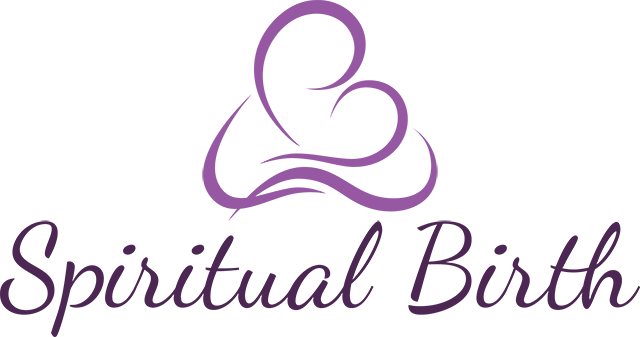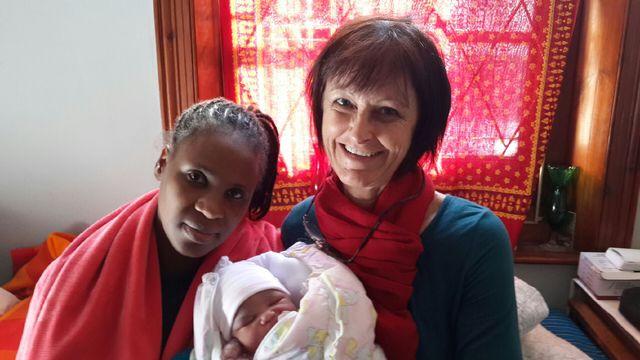Khanyisa and husband Sabelo were surprised today by how safe and pleasant it was to give birth to Khanyisa’s second child at home, after finding out that the birth unit where they had booked to give birth was full! A homebirth is safe

On the other hand, a hospital is the best place to be when a pregnant woman suffers a complication of pregnancy or birth. Last week, ‘Sarah’ (not her real name) developed Gestational Proteinuric Hypertension (GPH) and was referred to an obstetrician for further care at 35 weeks of pregnancy. Sarah had set her heart on giving birth undisturbed at home in the presence of a midwife. While her liver functions were normal, her kidney functions were NOT normal, her blood pressure was labile and proteinuria was almost solid. The baby was born by caesarian section yesterday and is healthy. The mother is recovering slowly. This mother is clearly safer in a hospital setting, cared for by specialists with surgical and intensive care facilities at hand.
The safety of homebirth depends on assessing mothers with good risk selection factors, an easily accessible transport system and well trained midwives. In Holland, students choose whether they wish to train as nurses, or as midwives. And once they are trained as midwives, they choose again whether they wish to work as homebirth or hospital midwives. So the training is thorough and applicable to their chosen vocation. This system seems to work well. Women need to be educated and nurtured with regard to their health, none more so than in South Africa. A one-on-one domiciliary midwifery service is a means to this end.


Have you use the Brewer Pregnancy Diet?
See http://www.drbrewerpregnancydiet.com/
I think Tom Brewer was a little bit over the top, but he was on the right track — good nutrition in pregnancy is so important. But the diet he recommended resulted in very big babies and sometimes that can be a problem.
Dear Denise
All my clients follow a high protein diet as recommended by Dr Tom Brewer. This client, however, booked late in her pregnancy and felt too ill and nauseous to eat anything, never mind protein. When there is prior kidney or liver damage, no diet in pregnancy will correct that. The mother and the fetus come into conflict over the available resources and the cure is to deliver the baby. Here in the Western Cape, we have the highest incidence of Pre-eclampsia and Toxaemia of pregnancy in the world. It is related to decades and lifetimes of malnourishment and the epigenetic effect is handed to the next generation of girls during the incubation in the womb. The soil is lime deficient, the water aquifers are calcium deficient and the average diet is high carbohydrate and low nutrient rich food. It is an ongoing problem and our Obstetric Professors at the University of Cape Town Medical School are doing extensive research on the aetiology and interventions of Gestational Proteinuric Hypertension.